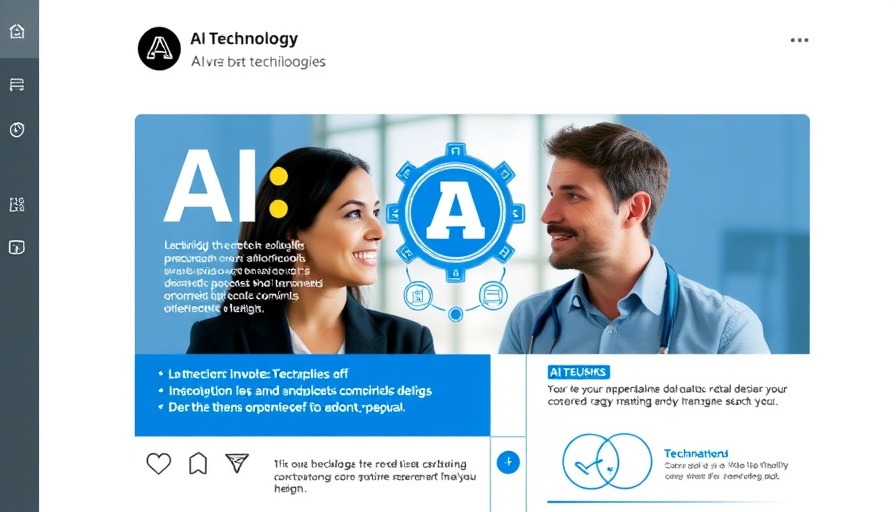
Understanding AI: More than Just Buzzwords
Artificial Intelligence (AI) often feels like an overwhelming maze of jargon, from algorithms to agents to large language models (LLMs). With terms seemingly thrown around without true understanding, it's crucial for business owners, students, and entrepreneurs alike to cut through the confusion. As our digital landscape evolves, so does the dialogue surrounding these technologies. Choosing the right form of AI isn't just about hopping on the latest trend; it's about deciphering how each element works to meet your specific goals.
In Choosing the Right AI: Agents, LLMs, or Algorithms? -- An Everyday AI Chat, the discussion dives into the complexities of selecting the optimal AI for your goals, and we’re breaking down its key ideas while adding our own perspective.
The Importance of Experimentation in Choosing the Right AI
In the video titled Choosing the Right AI: Agents, LLMs, or Algorithms? -- An Everyday AI Chat, the conversation centers around navigating these different types of AIs. In the rapidly changing world of technology, the best path forward is to actively experiment with these tools. Michael Abramov, CEO of Keymaker and Key Labs, emphasizes this, suggesting that for business leaders, the real strength lies in taking the time to explore and play with AI technologies. Just as we learn by trial and error in life, so too must we adopt that mindset in the arena of AI.
Agents vs. Algorithms: What’s the Right Fit?
When exploring AI options, understanding the differences between algorithms and agents is key. Algorithms function as standard methods to process data and solve tasks—think of them as baked recipes. Conversely, agents are like chefs who can adjust the recipes based on ingredients available and customer preferences. In business, the choice between using an algorithmic approach or deploying agent-driven systems will depend largely on the complexity of the tasks at hand.
Jargon Simplified: What’s An Agent, LLM, and Algorithm?
For those scratching their heads at industry-speak, let’s demystify these concepts. An LLM can be seen as a 'black box' that generates human-like text based on inputs it receives. In contrast, an agent operates with multiple models working together—essentially a dynamic decision-making tool that can adapt its processes. In simpler words, while an LLM answers queries, an agent remembers decisions and adjusts based on prior choices.
The Need for Data and Its Impact on AI Choices
A critical component of effectively utilizing AI lies in the data we provide. Abramov notes that without structured and reliable data, even the most advanced models will struggle. The difference between sound decision-making and misguided strategies often boils down to data integrity. By understanding how to source and process data correctly, businesses can build a foundation for AI to thrive.
Future Predictions: Navigating Risks and Innovations
Looking forward, the landscape of AI continues to shift. According to recent research, up to 40% of agentic AI projects may be canceled due to high costs and unclear value. This invites a deeper reflection on what risks await as new technologies unfold. Employing robust frameworks and a keen eye on the evolution of technology can help businesses navigate these tumultuous waters.
Getting Started: Moving from Confusion to Clarity
So, where should one begin? Whether you're a budding entrepreneur or an experienced CEO, the recipe for success lies in exploration. Engage with the tools at your disposal, and don’t shy away from testing new ideas and operational paths. The shift towards experimentation, as espoused in Michael's insights, could be your greatest asset in choosing the right AI for your needs and staying productive.
As we strengthen our understanding of AI and its multitude of forms, we’re ushering in an era not only of technological innovation but also of informed decision-making. Equipped with knowledge and a willingness to adapt, we can ensure our ventures benefit from the best that technology has to offer.
Ready to delve deeper into how AI can transform your business or studies? Start experimenting to discover what tools resonate with your specific challenges and goals. Explore further and subscribe to daily newsletters that keep you updated with the latest insights, ensuring you're always ahead in the AI landscape.
 Add Row
Add Row  Add
Add 




Write A Comment